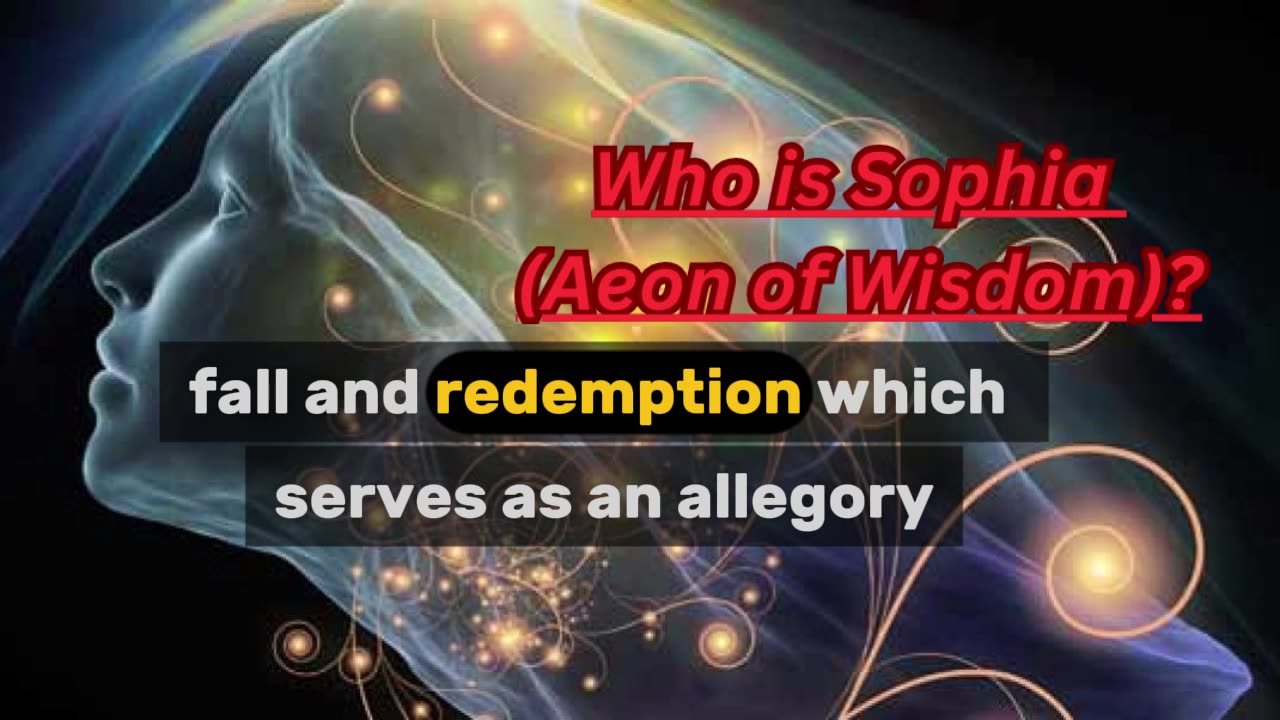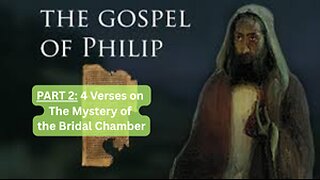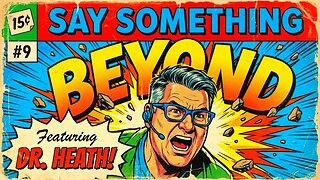Premium Only Content

Who is Sophia (Aeon of Wisdom)?
Who is Sophia (Aeon of Wisdom)?
In the complex system of Gnosticism, Sophia (Greek for "wisdom") is a central figure, representing the divine feminine, cosmic wisdom, and the source of both the material world and humanity's potential for redemption. She is an Aeon, a divine emanation from the ultimate, unknowable God known as the Monad or the Father. Sophia's story is a profound myth of creation, fall, and redemption, which serves as an allegory for the human soul's journey.
The Pleroma and the Fall
Gnostic cosmology posits a divine realm called the Pleroma, or "Fullness," which is inhabited by pairs of divine emanations called Aeons. These Aeons exist in perfect harmony, reflecting the Monad's divine essence. Sophia is often depicted as the youngest or final of these emanations. Driven by an intense desire to directly comprehend the Monad, an act beyond her capacity, she broke from the divine order. In her yearning, she acted independently without her male consort, disrupting the Pleroma's balance.
This act of solitary creation led to catastrophic consequences. Out of her fear, sorrow, and confusion, Sophia gave birth to a monstrous and ignorant being known as the Demiurge, or Yaldabaoth. This flawed entity, arrogant and unaware of the higher divine realms, proceeded to create the material world and its rulers, the Archons, in its own imperfect image.
The Material World and the Divine Spark
Ashamed of her offspring, Sophia cast the Demiurge out of the Pleroma into the lower realms. The Demiurge then unknowingly created a flawed universe, with matter and spiritual light becoming entangled. Sophia's intense emotions during her fall are said to have solidified and formed the very elements of this chaotic, material world.
However, her story is not one of complete failure. In a crucial moment, she imbued humanity with a divine spark, a fragment of her own essence. This spark, trapped within the material bodies created by the Demiurge, is the key to Gnosis—secret spiritual knowledge—which allows individuals to recognize their true divine origin and begin their journey back to the Pleroma.
Redemption and Symbolism
Sophia's tale is ultimately one of redemption. Her suffering and repentance are seen as a mirror of the human soul's plight. In many Gnostic narratives, a higher Aeon, often Christ, is sent from the Pleroma to aid both Sophia and humanity. Christ brings the divine knowledge necessary to awaken the sparks within souls and guide them back to their ultimate source. Sophia thus transforms from a tragic figure of error into a guiding presence, an archetypal representation of the soul striving for enlightenment.
The symbolism of Sophia is multifaceted:
Divine Feminine: She represents a feminine aspect of divinity, often suppressed in patriarchal traditions, embodying receptivity, creativity, and the mystery of hidden knowledge.
Cosmic Drama: Her story provides a framework for explaining the existence of suffering and imperfection in creation without attributing it to a flawless, benevolent God.
The Soul's Journey: Sophia's fall and subsequent quest for redemption mirror the human condition of being separated from the divine and seeking reunion.
Connections in Other Traditions
The concept of a personified, feminine wisdom did not originate with Gnosticism. It has deep roots in other ancient traditions:
Jewish Wisdom Literature: In books like Proverbs, Job, and Sirach, a female figure named Hokhmah (the Hebrew word for wisdom) is described as God's first creation and a companion in the creation of the world. She is portrayed as a source of order and a guide for humanity, an idea that directly influenced the Gnostic conception of Sophia.
Christianity: In Christian mysticism and Orthodox theology, the concept of Hagia Sophia (Holy Wisdom) is prominent. While not a distinct goddess, she is often identified with Jesus Christ and the Holy Spirit, embodying divine wisdom as both a principle of creation and salvation. The iconic church in Istanbul, Hagia Sophia, is dedicated to this concept.
Modern Relevance
In recent centuries, Sophia has been reinterpreted as a powerful symbol for several modern movements and fields of study:
Feminist Theology: Sophia is seen as a crucial corrective to male-dominated religious imagery. By providing a divine feminine figure who is active in creation and redemption, she challenges patriarchal religious structures and offers a more inclusive vision of the divine.
Jungian Psychology: The Swiss psychiatrist Carl Jung saw Sophia as an archetype within the collective unconscious. She represents the anima, the feminine principle in the male psyche, or the universal archetype of wisdom itself. Her story of a fall and redemption mirrors the psychological journey of integrating the shadow and achieving individuation.
Esoteric and New Age Traditions: In contemporary spirituality, Sophia has become a symbol of personal empowerment and the pursuit of gnosis (inner knowledge). She represents the divine spark that lies within each individual, waiting to be awakened. Her myth inspires a path of self-discovery and spiritual liberation that prioritizes direct experience over dogmatic belief.
-
 5:10
5:10
Doubting Tomasz 2.0
13 days agoGospel of Philip: 4 Verses - The Mystery of the Bridal Chamber
15 -
 23:57
23:57
Jasmin Laine
5 hours agoCarney SNAPS at Reporters—MOCKS Trump and it BACKFIRES IMMEDIATELY
8838 -
 LIVE
LIVE
Sarah Westall
1 hour agoDo Near Death Experiences Provide a Glimpse into Reality? w/ Darius Wright
102 watching -
 49:36
49:36
Barry Cunningham
2 hours agoMUST SEE: PAM BONDI AND KAROLINE LEAVITT MAKE REMARKS! | AND MORE NEWS!
79.1K16 -
 41:11
41:11
Donald Trump Jr.
21 hours agoMaking America Affordable Again, Interview with Economist Steve Moore | TRIGGERED Ep.294
107K91 -
 1:02:43
1:02:43
BonginoReport
4 hours agoThe Insane Proposal That Will Ruin Elections FOREVER - Nightly Scroll w/ Hayley Caronia (Ep.184)
38.6K42 -
 16:56
16:56
T-SPLY
5 hours agoTennessee Lawmaker Running For Congress Admits To "Bullying" ICE Vehicles
2.14K5 -
 LIVE
LIVE
LFA TV
23 hours agoLIVE & BREAKING NEWS! | MONDAY 11/24/25
478 watching -
 1:44:50
1:44:50
Mike Mac - Say Something
1 day agoSay Something Beyond W/MikeMac: DR. HEATH - Ep.15
13.2K -
 1:31:14
1:31:14
Quite Frankly
6 hours agoGrief & Gratitude, Pyretta Blaze, Crazy News | Megan Daubert 11/24/25
11.6K6